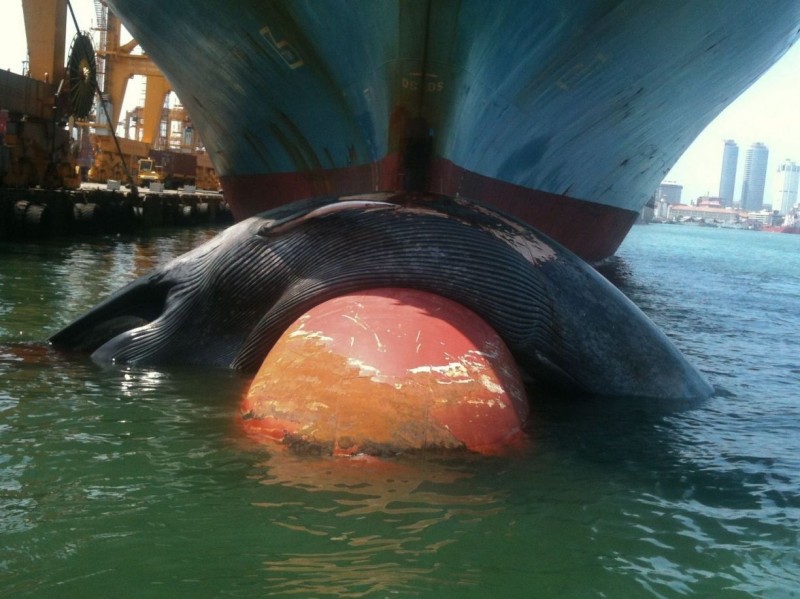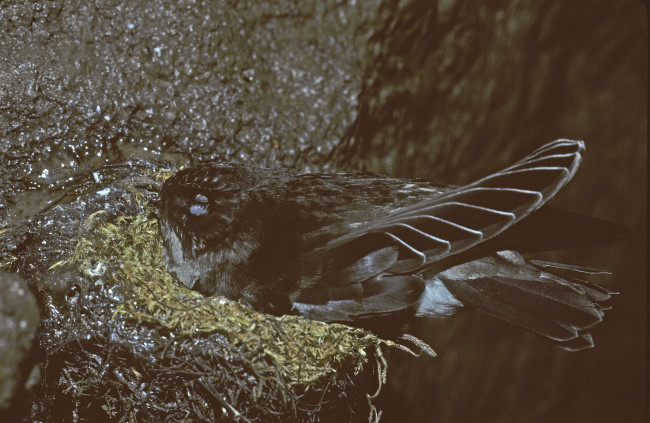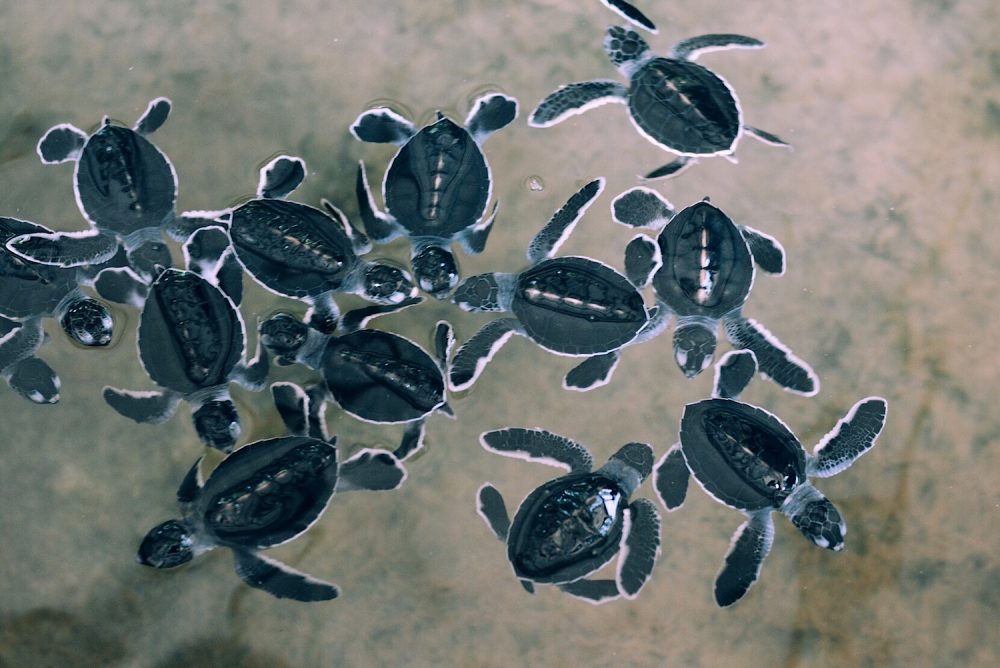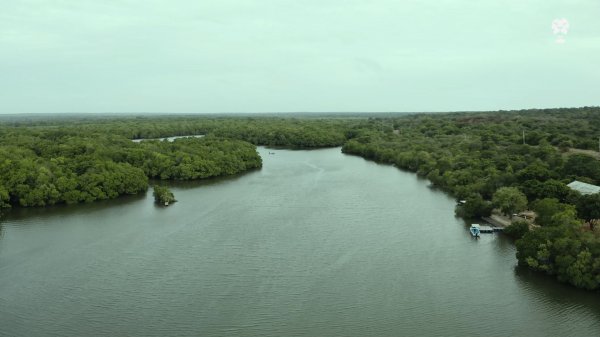
Whale watching makes up one of Sri Lanka’s many tourism attractions, but the majestic mammals which many are eager to spot in the seas are constantly under threat from shipping vessels.
Busy shipping lanes off the southern coast are known to have witnessed injury and even death among our whales, and this has been an increasing cause for concern.
In March 2012 for instance, we witnessed the horrifying image of a dead blue whale draped across the bow of a container ship which entered the Colombo port. The incident prompted environmentalists to call for protection of the whales, and researchers to point out that ship traffic was in fact a leading cause of death for these whales.

The tragic image of the dead Blue Whale on the bow of a ship in Colombo. Photo credit : Sopaka Karunasundara
More alarming, the blue whales found in our Southern waters, known as pygmy blue whales, could face extinction over the next few years if something is not done to prevent ship strikes, an international NGO, Friend of the Sea, recently pointed out.
A Possible Solution
Executive Director of the Ceylon Shipping Corporation, Dr. Dan Malika Gunasekera, explained that one solution that has been considered, and recommended, for a while now, is to shift shipping lanes around 15 nautical miles further South.
Dr. Gunasekera, who is a PhD in Maritime Law, believes any solution should ideally look into both protection of whales, and minimising economic impact.

A blue whale that was fatally injured as it slept in a busy shipping lane off the Southern coast. Photo credit: Tony Wu
The same recommendation was put forth by Friend of the Sea, who, according to Director Paolo Bray, met with government officials in Sri Lanka recently to push for speedy action. He also said that an immediate initiative taken to move the shipping lanes southwards could “reduce whale mortality by 95%.”
The Threat to Whales
A large population of blue whales can be found in the Southern waters, along the Mirissa line. The reason whales flock in large numbers to this area is due to the steep seabed, and strong currents that bring in a lot of food for the whales, Prof. Tilak Priyadarshana, of the Faculty of Fisheries and Marine Sciences and Technology, University of Ruhuna, explained.
According to a study co-authored by Prof. Priyadarshana,“the highest densities of blue whales were observed in the current shipping lanes, peaking at an average of 0.1 individuals km−2 along the westbound shipping lane… These high densities of whales, combined with one of the busiest shipping routes in the world, suggest a severe risk of ship strikes.”
While it is difficult to determine exactly how many whales die as a result of ship collisions each year, Prof. Priyadarshana pointed out that shipping activity was harming the whales in more ways than one. “We have observed that some of the whales are now deaf – the sound climate in these areas is not favourable,” he said. He further explained that this problem could be attributed to vibrations caused by the ships.
However, he pointed out that shifting shipping lanes would not be an easy move, given that it could incur additional costs (to the vessels for instance). He also said that it “will not solve all the issues,” as sometimes whale watching operators are also to blame, especially if they disturb whales by approaching too close. He pointed out that while whale watching vessels are often too small to cause serious injury, they can still cause disturbances, especially if they fail to comply with international guidelines.
The Shipping Lane Solution Explained
Given the increased traffic in these shipping lanes over the years, it remains imperative that something be done at the earliest to prevent further whale casualties. As of now, the best possible solution would be to move these shipping lanes away from the areas where whales congregate most.
Dr. Gunasekera, who supports the proposal to shift shipping lanes further South, said that “the Government of Sri Lanka has to pay huge attention to re-mapping the area to protect whales.”
He explained that since we can identify which areas the whales are more likely to congregate in, special attention can be paid to moving the lanes at least in that area.
The diagram below shows the Traffic Separation Scheme off Dondra Head, and would perhaps help illustrate this point better. According to Dr. Gunasekera, the two yellow lines off the Southern coast indicate the two shipping lanes for vessels (traveling in both directions) calling at the port of Colombo. The red shaded lines indicate international shipping lanes, while the red dots indicate whale activity.
As we can note, significant whale activity is limited to one particular area, and this, unfortunately, is also where one set of shipping lanes cuts through. It is this area that Dr. Gunasekera says must be re-mapped: in that the two lanes (for ships headed to or moving from the Colombo port) must be shifted 15 nautical miles southwards, at least between the Weligama and Dondra stretch.
The Need to Act Quickly
However, Dr. Gunasekera also explained that the procedure to shift shipping lanes involves submitting a proposal to the International Maritime Organisation, which regulates international maritime traffic.
The catch here is that the IMO receives proposals for ships’ routeing systems only once per year, to be considered at the Sub-Committee on Safety of Navigation, Communication and Search and Rescue (NCSR).
For for this proposal to be accepted and worked on at the earliest, the Sri Lankan government needs to meet the NCSR 3 submission deadline for non-bulky documents (those containing six pages or fewer) and bulky information documents, which is December 25, 2015.
Dr. Gunasekera added that the government had expressed concern in the matter, so he was hopeful that the plan will witness fruition.
When contacted this week, Director General of Merchant Shipping, Ajith Seneviratne told Roar that a committee had been formed to look into this issue, and that a proposal will be submitted to the IMO based on the findings of this committee. He did not indicate, however, a specific date for the submission of the proposal.
It is clear that a solution is at hand – it is now up to the Government of Sri Lanka and the International Maritime Organisation to follow through in time, to prevent further harm to the ocean’s largest mammals.
Clarification: This article previously stated that the International Maritime Organisation accepted proposals only once every two years, and that the submission deadlines for proposals exceeding 6 pages was November 27, while the deadline for proposals less than 6 pages long was December 26. This was corrected upon receiving clarification from the IMO, that the organisation accepts proposals once a year, and that the deadline is in fact December 25.
Featured image courtesy, Tony Wu








